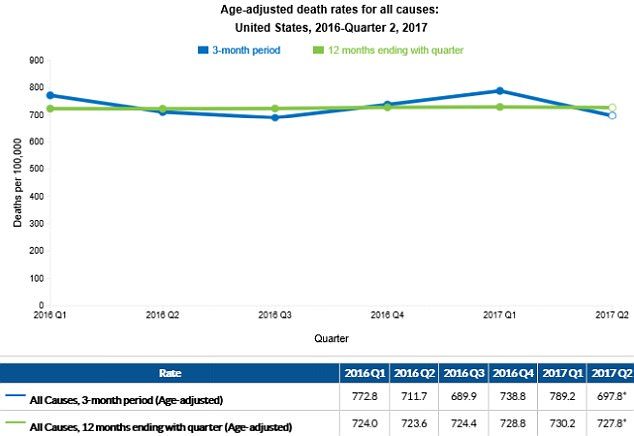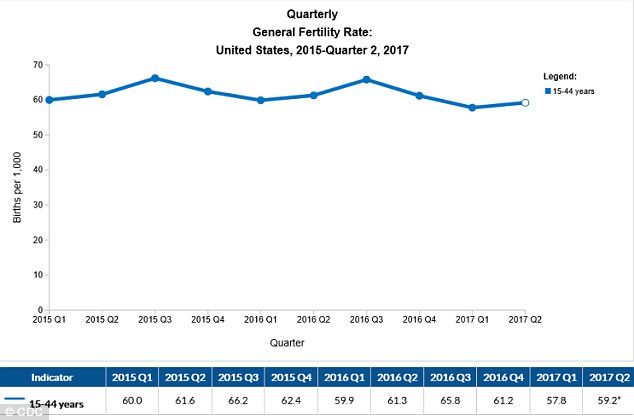Deaths from cancer and HIV, on the other hand, are estimated to continue their steady declines, underscoring the successes of innovative treatments in the US, and infant mortality remains stable.
The CDC's numbers so far for 2017 confirm trends in US population growth decline that scientists and statisticians have observed in recent years.
The new stats come as baby boomers reach old age, and people are waiting longer to conceive and having fewer children than previous generations.

Birth rates peaked in 1990, and rose back again to around 70 per every thousand women in the US in 2007. But they have fallen steadily ever since. According to the CDC's estimates, the birth rate for the second quarter of this year is only 59.2 per 1,000 women.
The declining birth rates are likely driven by a significant reduction in teen pregnancies. In 2016, the teen birth rate fell to a record low, falling nine percent from 2015.
While birth control is aiding in the prevention of unwanted pregnancies, many experts have expressed concern that over the growing number of men and women that are infertile, or choosing to wait to try to get pregnant until later in life when the odds of conception are lower.
Comment: Another factor: Women in their 20's who seek higher education are graduating with massive amounts of student debt and are often forced to live at home with parents due to harsh economic realities: Debt & childcare costs drive US fertility rate to historic low
These trends are also linked to the aging population, a fact borne out by the CDC's most recent statistics.

Heart disease, hypertension and stroke deaths are estimated to be continually climbing.
The new data presents more encouraging statistics for some of the most vicious diseases that affect younger people.
Last year, seven new treatments for various forms of cancer were approved by the FDA. The CDC's most recent data shows, encouragingly, that the rate of cancer deaths has fallen by nearly two percent in just one year.
Similarly, HIV deaths have been in decline in recent years, corresponding with the increased prevalence of effective antiretroviral treatments and, more immediately, the advent of preventative treatments like PrEP. Since this time last year, HIV deaths have fallen by 0.2 percent, according to the CDC.
Overall, the CDC estimates that the death rate for the US has risen nearly five percent just since last year. Infant mortality, meanwhile, remains stable, but taken together, the sets of data support widely-observed trends that the country's population growth is slowing.




Reader Comments
to our Newsletter